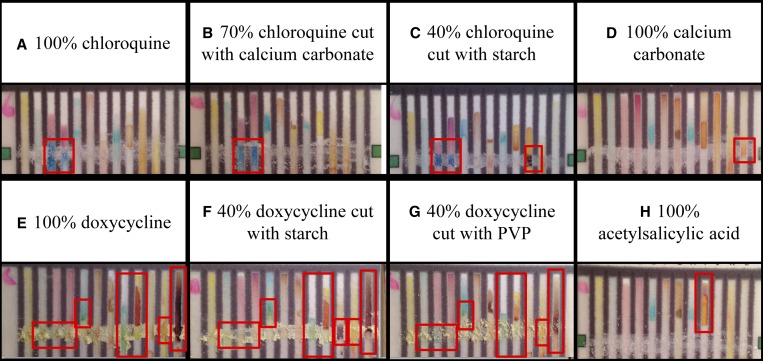Figure 4.
12-lane test card outcomes for samples representing different pharmaceutical formulations. Chloroquine (CQ) at 100% (A) looks very similar to 70% CQ/30% calcium carbonate, however 40% CQ/60% starch (C) produces a different pattern of colors because of the lighter blue color in the third lane and the presence of starch. 100% calcium carbonate (D) gives an orange color with iron chloride, but this color is not detectable in the 30% calcium carbonate used to cut CQ (B). The active pharmaceutical ingredient (API) doxycycline (DOX) at 100% produces a distinctive color bar code (E). At 40% concentration, the intensity of the brown color in the last lane is much weaker (F and G) and the appearance of starch (F) alters the overall color bar code and would indicate a variation in this formulation. Acetylsalicylic acid (H) produces a unique color bar code and is easily distinguished from antimalarial APIs.

